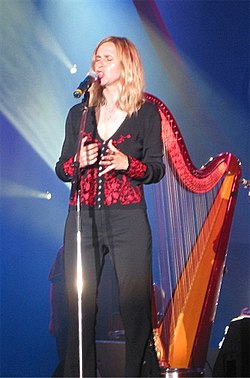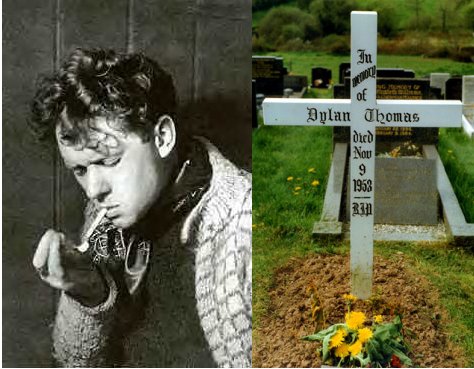 Every year the Smithsonian holds a folklife festival at the mall. It focuses on three different cultures and is a great opportunity to dabble in these cultures' music and foods. This year the featured cultures were African-American (with a focus on the oral tradition), Central & South American (with an emphasis on music), and Welsh.
Every year the Smithsonian holds a folklife festival at the mall. It focuses on three different cultures and is a great opportunity to dabble in these cultures' music and foods. This year the featured cultures were African-American (with a focus on the oral tradition), Central & South American (with an emphasis on music), and Welsh.For my husband and me, one of the highlights was the Colombian band pictured above, Grupo Cimarron. In fact, we are planning on going to their concert on July 3.
 Here are a few links to their YouTube videos:
Here are a few links to their YouTube videos:http://www.youtube.com/watch?v=wf4Ao4xHeQM
http://www.youtube.com/watch?v=OsviE6VzNo0
http://www.youtube.com/watch?v=-hTsdTPNqjs
For more information about the group, see this page: http://www.festival.si.edu/2009/las_americas/cimarron.aspx
The other group we saw was a Nuyorican group, Viento de Agua. They are now based in Puerto Rico although they began in New York.
http://www.festival.si.edu/2009/las_americas/viento.aspx
In this video below, you can see people dancing to the music. This is a more realistic representation as when we heard the band we could not see them because of all the people dancing.
http://www.youtube.com/watch?v=lvy7N88WZok
These dancers from Austin TX's Puerto Rican Folkloric Dance and Cultural Center are performing the plena, one of the musical styles that Viento de Agua perform in. For more information about this style, see this link: http://www.prfdance.org/brochure/plena.htm

Of course, there was a lot more to the festival. This is the overall introduction to Latin American music:
http://www.festival.si.edu/2009/las_americas/index.aspx
My husband and I have heard the Puerto Rican group Ecos de Borinquen elsewhere, and they are outstanding! Here is their page at the festival website, complete with videos.
http://www.festival.si.edu/2009/las_americas/index.aspx
The Texmaniacs are always popular:
http://www.youtube.com/watch?v=f1S1UFS3Nuo

Mexico was represented as well. Here are links to YouTube videos of Arpex, a group that will make you think of the harp very very differently!
http://www.youtube.com/watch?v=V-ezEBBSle0
http://www.youtube.com/watch?v=JYjpHjyras8
Another Mexican group was Mariachi Los Camperos de Nati Cano:
http://www.festival.si.edu/2009/las_americas/camperos.aspx

Los Camperos de Valles' music is also appealing:
http://www.festival.si.edu/2009/las_americas/valles.aspx

As much as I enjoy the music, the folklife festival was not just about Latin American music! In fact, this summer in EN 202, you may find the African-American oral tradition more interesting. The man pictured below is New England storyteller Len Cabral, one of the performers we watched.

Here is a link to a video of one of his performances:
http://www.youtube.com/watch?v=OhoYeJPNC88
This link will give you an overview of how the festival portrayed the African-American oral tradition. We spent most of our time at the storytellers' tent, but there was so much more. I would have liked to have seen the documentary on radio or listened to WPFW's broadcast from the festival.
http://www.festival.si.edu/2009/giving_voice/index.aspx
Since I began this section with Len Cabral's picture, I will talk about his performance first. He told a number of stories, mainly about trickster figures like Anansi, Coyote, and Monkey. He also encouraged the audience to participate. For a little information about the trickster, see this article about this type of character (or archetype) from Professor Michael Webster at Grand Valley State University:
http://faculty.gvsu.edu/websterm/Tricksters.htm
Jennifer Smith's article focuses on American tricksters:
http://www.associatedcontent.com/article/14919/african_and_native_american_trickster.html?cat=38
If you don't mind a little coarse language in the opening quote, this article by Jo Beth Brixton is useful: http://ualr.edu/jxbriton/folk.html
However, if you would just like to focus on Anansi, a West African figure who appears in African-American and Caribbean stories, follow this link: http://www.pantheon.org/articles/a/anansi.html
If you would like some stories about Anansi, see these links:
http://anansi-web.com/anansi.html
http://www.afro.com/children/myths/wisdom/page1.html
http://www.africa.mrdonn.org/anansi.html
 For more information about Coyote the trickster, see Dr. Kathleen L. Nichols' site:
For more information about Coyote the trickster, see Dr. Kathleen L. Nichols' site:http://members.cox.net/academia/coyote.html
She also includes some stories that feature him. Here Coyote is stealing fire.

Brer Rabbit is another trickster who appears in storytellers' tales. Here he is confronting the tar baby.
http://www.americanfolklore.net/brer-rabbit.html

We also listened to two DC based performers, Christylez and Holly Bass. Here is a link to a YouTube video of Christylez performing "Mambo Sauce," an ode to a DC condiment:
http://www.youtube.com/watch?v=Ko-SpdmThic
The sound on this video of "Wireless Signal" is better and shows that he encouraged audience participation as well:
http://www.youtube.com/watch?v=n5o6w6sBk4M
This video is long, but it has Christylez on his human beatbox:
http://www.youtube.com/watch?v=RiowOzPNW-M
Here is a picture of the artist simply playing his guitar. I was looking for a picture of him playing a mandolin...oh well!

Mustn't forget about Wales!

 As you can see from the map above, Wales is a part of Great Britain or the U.K.. The picture above the map shows that Wales can be a very picturesque and rural area. Of course, some of it is quite urban or suburban. We also learned from a member of the Centre for Alternative Technology that the Welsh have been very active in the environmental movement, keeping his organization going throughout the 1980s and 1990s to today.
As you can see from the map above, Wales is a part of Great Britain or the U.K.. The picture above the map shows that Wales can be a very picturesque and rural area. Of course, some of it is quite urban or suburban. We also learned from a member of the Centre for Alternative Technology that the Welsh have been very active in the environmental movement, keeping his organization going throughout the 1980s and 1990s to today.Here is the Smithsonian's overview of Wales:
http://www.festival.si.edu/2009/wales/index.aspx
Although Wales is part of the UK, many people living there speak Welsh as their first language. Here is some information about this language:
http://www.omniglot.com/writing/welsh.htm
http://www.omniglot.com/language/phrases/welsh.php
http://www.omniglot.com/songs/welsh/index.php
We went to a performance of Welsh singers...and the first performer sang in Welsh!
This singer Cerys Matthews was not at the festival, but I think that her video will give you an idea of what a song in Welsh might sound like:
http://www.youtube.com/watch?v=kIKnNJyLFDA
OK, this is the singer we heard, Gareth Bonello.
http://www.youtube.com/watch?v=TPJYD1LpkA0
Later on Gai Toms played:
http://www.youtube.com/watch?v=mNGundye6RQ
Sian James is more traditional, singing and playing the harp.
http://www.youtube.com/watch?v=8DfCA0aP7yQ
 Wales is also known for its choral music. Here is a link to Only Men Aloud, a choir that won the BBC's Last Choir Standing:
Wales is also known for its choral music. Here is a link to Only Men Aloud, a choir that won the BBC's Last Choir Standing:http://www.youtube.com/watch?v=g4xYIGH-pI8
 I didn't get to experience either, but I was told that the Welsh storytelling and cooking demonstrations were fantastic.
I didn't get to experience either, but I was told that the Welsh storytelling and cooking demonstrations were fantastic. Here are links to videos of storytellers and poets. The first is Hugh Lupton:
http://www.youtube.com/watch?v=qozzHxn8q9U
The next is David Ponkey retelling part of the Welsh epic, The Tale of Taliesan.
http://www.youtube.com/watch?v=i2vyDsWqCM4
Mab Jones is a performance poet. This video is "Wales in Pictures."
http://www.youtube.com/watch?v=qszEbwULJ7M
Unfortunately, Gillian Clarke is not reading her own poem, but here it is:
http://www.youtube.com/watch?v=v0zlUQEWrRE
Below is a picture of Cader Idris, the mountain she mentions in her poem.
We'll finish with some links to Dylan Thomas' poetry since we may read him at the end of our summer session. He was famous for his readings, so I am going to look for recordings of *him* reading his poems!
The first poem is "In My Craft or Sullen Art."
http://www.naic.edu/~gibson/poems/dthomas1.html
http://www.youtube.com/watch?v=NIoXV-HXobo
The next is "Do Not Go Gentle Into that Good Night," which we may read.
http://www.poets.org/viewmedia.php/prmMID/15377
http://www.youtube.com/watch?v=PyWiE1vNSxU
"Fern Hill" is also wonderful, but it is not read by Thomas.
http://www.poets.org/viewmedia.php/prmMID/15378
http://www.youtube.com/watch?v=xg-_ah0JfhU

No comments:
Post a Comment